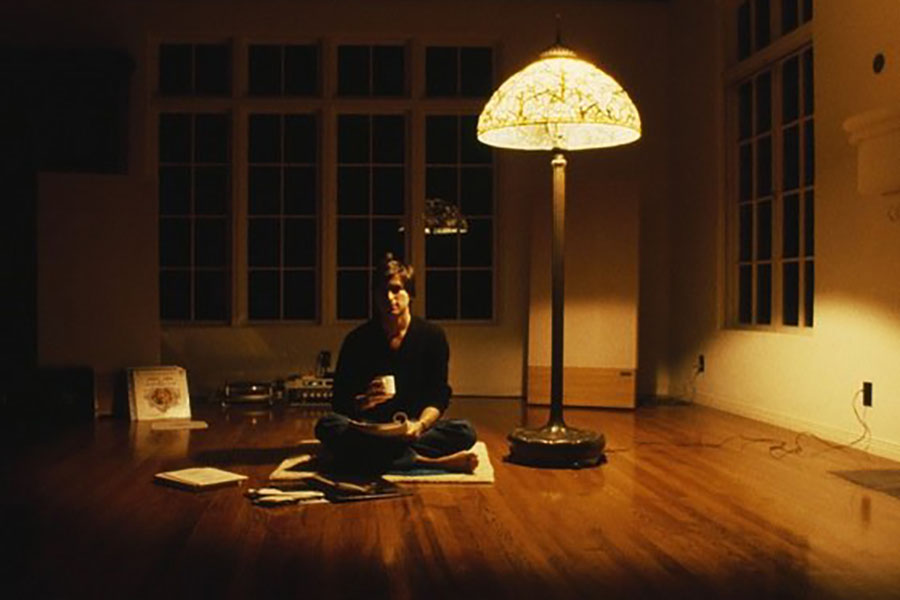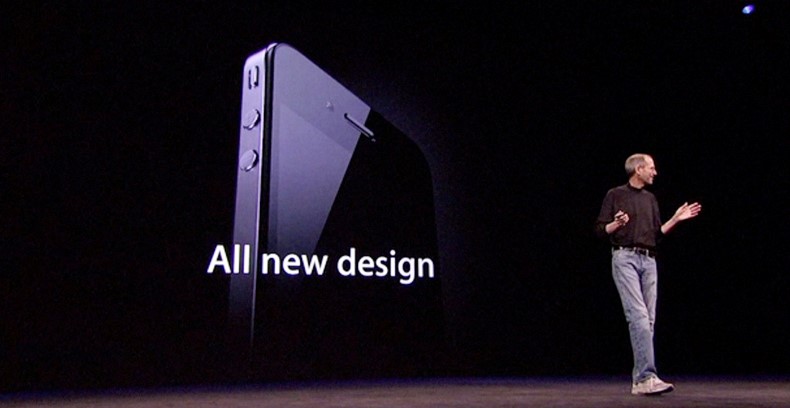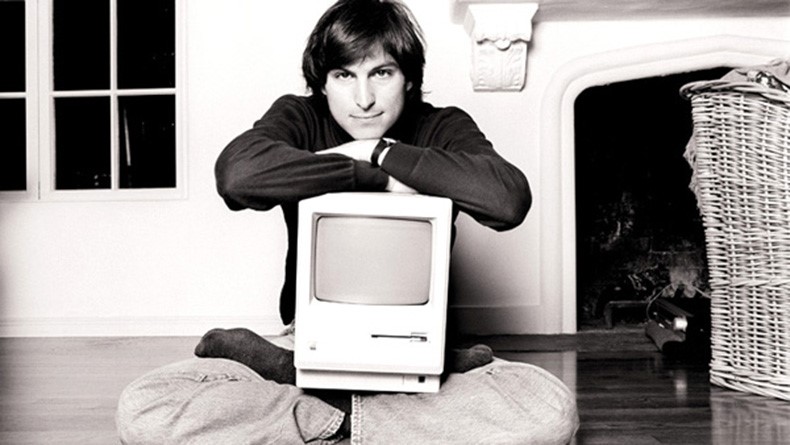
Santa Clara Meditation Book – The 3 Things Steve Jobs Found Through Meditation
Photo: In 1982, Steve Jobs, already a billionaire at age 27, Diana Walker (photographer) took a photo of his room. He was in his room with a tea in his hand in deep meditation. Steve Jobs stated after recalling this moment “The only thing I needed was a cup of tea, lighting, and music.”
The 3 Things Steve Jobs Found Through Meditation
As mentioned in the previous blog “Why did Steve Jobs meditate”,
Steve Jobs was an innovator who pursued the nature and enlightenment of life through meditation.
The type of meditation he did was Zen meditation, which refers to the performance of mental concentration that leads to the state of enlightenment by refining his mind and unifying the spirit.
That kind of meditation had a big impact on his life and the products he made.
“Steve was fascinated by Zen meditation. His childhood played a deep role.
His entire approach was solely aesthetics of minimalism and intense concentration. That was his uniqueness. That was all from Zen meditation.”
In <Steve Jobs> (by Walter Isaacson), his acquaintance stated how Jobs’ meditation journey affected Jobs.
What did Steve Jobs obtain through meditation?
The 3 things he obtained through meditation.
1. Courage to follow intuition. Seeking the voice within me.
“Everybody’s time is limited. Don’t waste your time trying to live somebody else’s life. The noise from someone else’s voice, make sure it does not cover/overturn your own inner voice. What is most important is that you need to have courage to follow your mind and intuition. You already know what your mind and intuition want. Everything outside of that is secondary.”
Steve Jobs, 2005 during Stanford University’s graduation speech
https://www.youtube.com/watch?v=7aA17H-3Vig
This is what he said in 2005 after he fought off pancreatic cancer and dramatically came back, giving a graduation speech at Stanford University. 50 year old Jobs at the podium. More than anybody else, he was a person who followed the voice of his mind and intuition, not from his head but from his heart. Apple, MacIntosh computer, Pixar, ipod, iphone, and the ipad. All these products came from him following his heart and his intuition. When others around him were telling him it wouldn’t work, through his assurance of his intuition he pursued his ideas.
Jobs knew that intuitive understanding and awareness was more important than abstract thinking and intelligent logic analysis. His intuitive insights came from his meditation during his youth.
Evaluation of others, calculations of profit and loss, and fear-like noise are removed. Time and space where you can remain quiet and sincere, that is Zen meditation.
From <Steve Jobs iMIND> by Bumjin Kim
Steve Jobs’ meditation time was solely time to know and meet his true self.
2. Aesthetics of simplicity. Just discard everything and leave only the essence.
“Completion is, not when there is nothing more to add, but rather when there is nothing left to remove.”
Steve Jobs
“Simplicity is harder than complication. To make your thinking clear and simple requires a lot of effort. When you reach the level of being able to think simply, you can move mountains.”
1998 Business Week

Steve Jobs, not only in his life but also in the products he made, pursued simplicity. When Apple’s iphone and ipod were introduced, the key word he always used was ”simple”.
In <Insanely Simple> by Ken Segall, it states “All innovations led by Apple are born from the dedication to simplicity in life.” The common theme out of the several reasons why Apple was able to succeed was simplicity. Apple’s strongest pro was to make complicated into simple, so users found it easy to use and comfortable.
But just as Jobs also expressed, simplicity is something very difficult to do. To make it simple, you have to be able to understand the deeper essence of the product’s true properties To be able to see that essence, you need intuition and to stay focused. Jobs states he had these abilities through Zen meditation.
From <Steve Jobs> (Min sound) author Walter Isaacson, states the following.
“Jobs’ fierceness and concentration abilities were obvious. First, he prioritized, and then focused his attention and filtered out distractions. If something caught his attention, he focused on it without hesitation. He excluded some buttons to make the machine simpler, removed some features to make the software simpler, removed some options, and the interface was made simple. He believed his ability to concentrate and his simplicity were related to his Zen meditation.
He trained to respect intuition and taught how to filter out all the distraction and unnecessary things to cultivate the aesthetics of minimalism.”
In 1997, Steve Jobs managed Apple that was going down a bad path and as soon as he became the CEO, he decreased the number of products Apple was making and focused on only 4 computers.
At that time, Apple was creating 40 plus products, so many people were against it saying it was impossible, Steve Jobs rearranged it in order to focus on the core.
Unlike what people predicted, Jobs’ simplicity was a big success. After Apple made a come back, he made a 10 billion dollar debt into a 4 billion dollar profit.
Steve Jobs’ life, put shortly, was focused on simplicity.
This was because he knew that staying focused while getting rid of the unnecessary was the way to live a simple life. Whether something is essential or not, those that are not are shrugged off. This is the strong point of simplicity. Meditation helps to build that ability.
3. Unconventional, every moment he breaks frames
Steve Jobs lived a life of challenges to common sense and customs in many areas. He refused to be still and even if he failed, he wanted to move forward, constantly pushing to innovate, always trying to evolve.

In his interview with “Playboy” (Feb. 1985) it is rare to find one who does amazing things in his 30s-40s.
“As people age, they get stuck in their ways. Our mind is like a computer. Thoughts create a pattern that will be a stepping stone to a person’s mind. And people usually fall into those patterns. It’s like a groove in a vinyl record and you cannot get out of it. There aren’t many people who can create new grooves that are different from their established viewpoint and values.”
But if every moment you could get out of that set pattern…?
That result would be very different. Steve Jobs himself showed just that.

Jobs’ creativity and insight are not attributed by the cutting-edge technology or the latest marketing theory but by inner reflection through meditation. He shows that those who have found enormous power inside are already ready to do great things.
“If you sit still and look within, you will see our minds are unstable and restless. But as time passes, the waves crashing in the mind will calm down. Then this creates a margin that can detect something more subtle. At that moment, our intuition kicks in and one can see the world more clearly and become more faithful to the present. This is the cultivation of the heart which needs to be constantly trained.”
– Steve Jobs

* References from
<Steve Jobs> by Walter Isaacson
<Steve Jobs iMind> by Kim, Bum Jin
<Insanely Simple> by Ken Segall